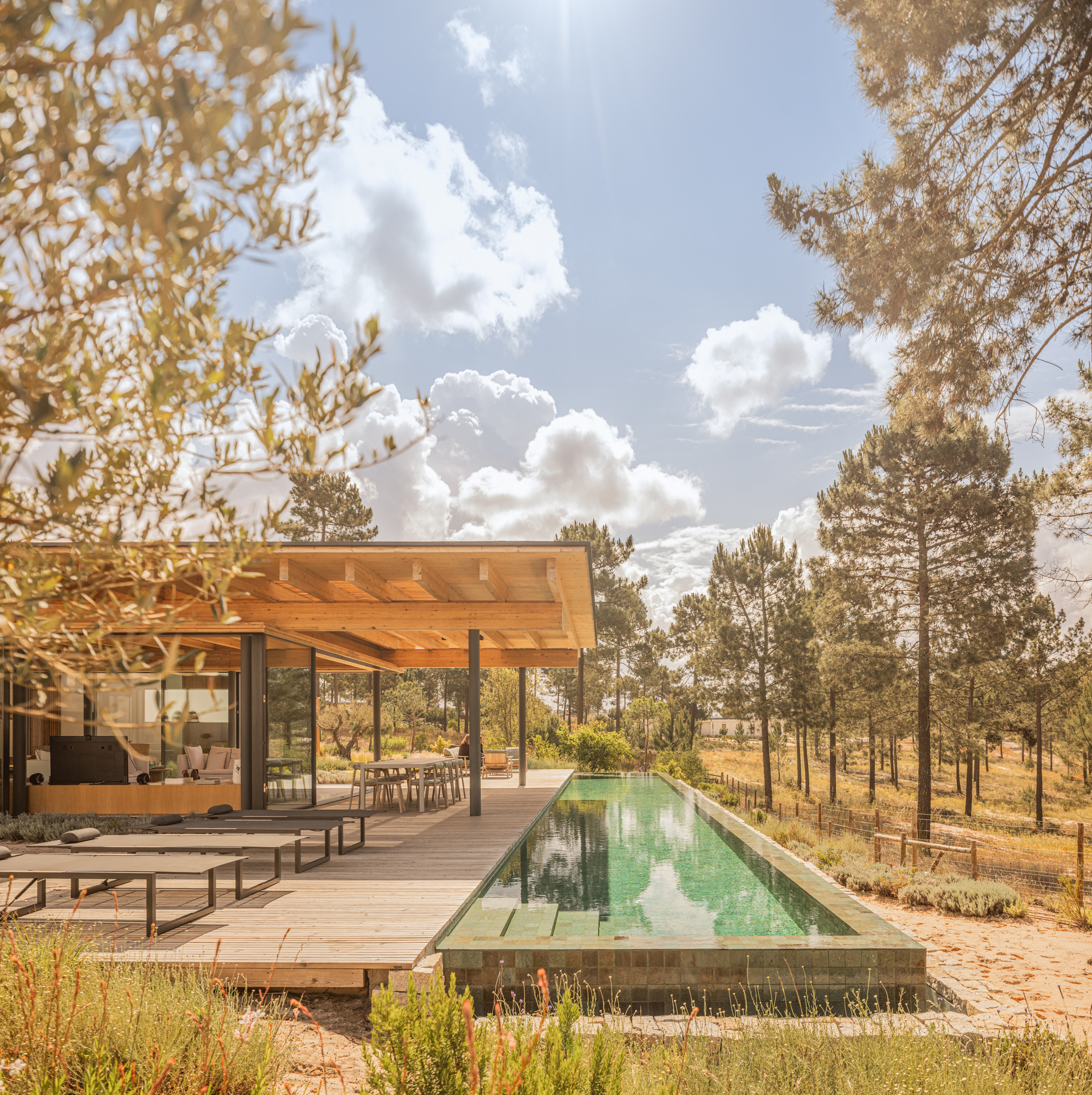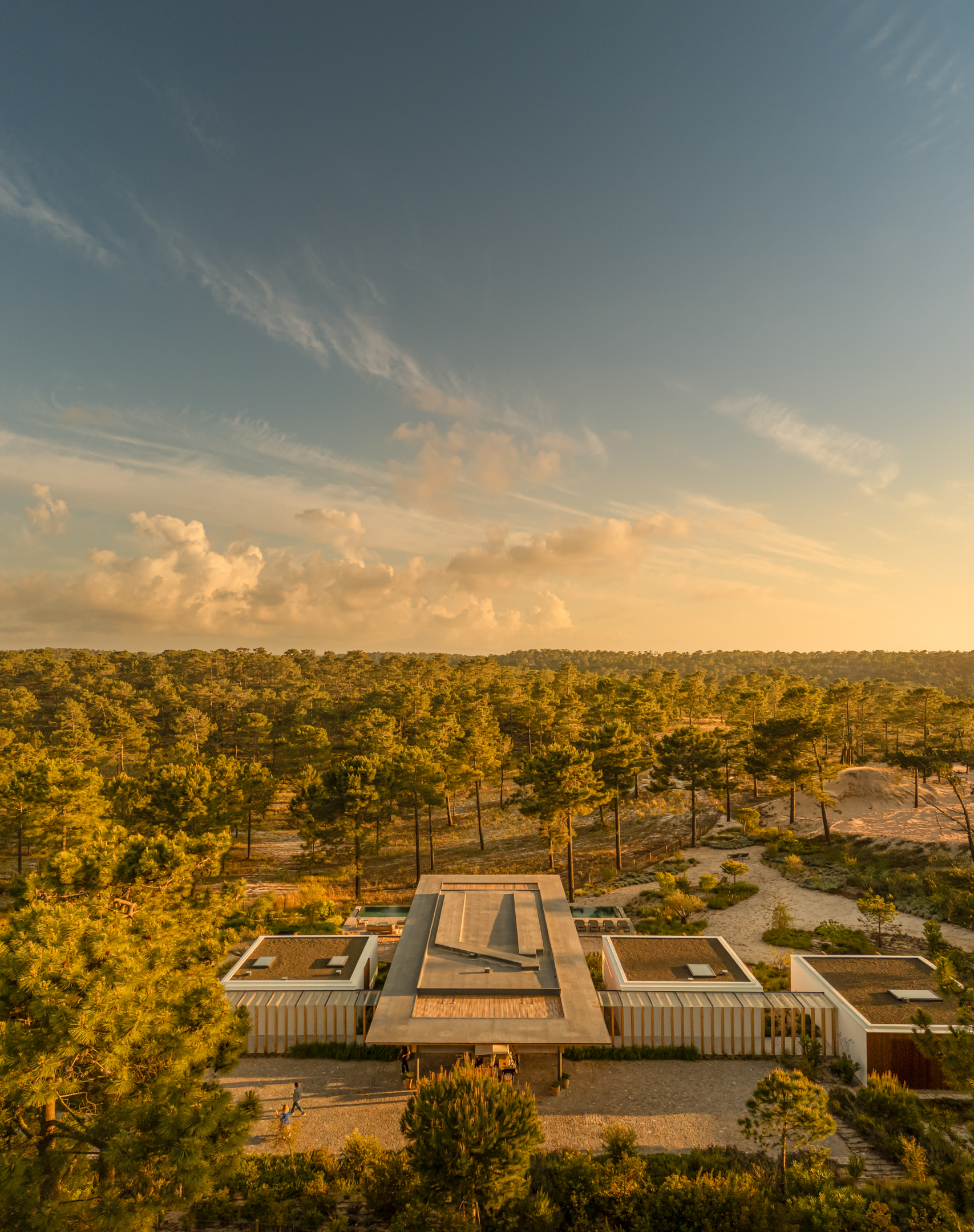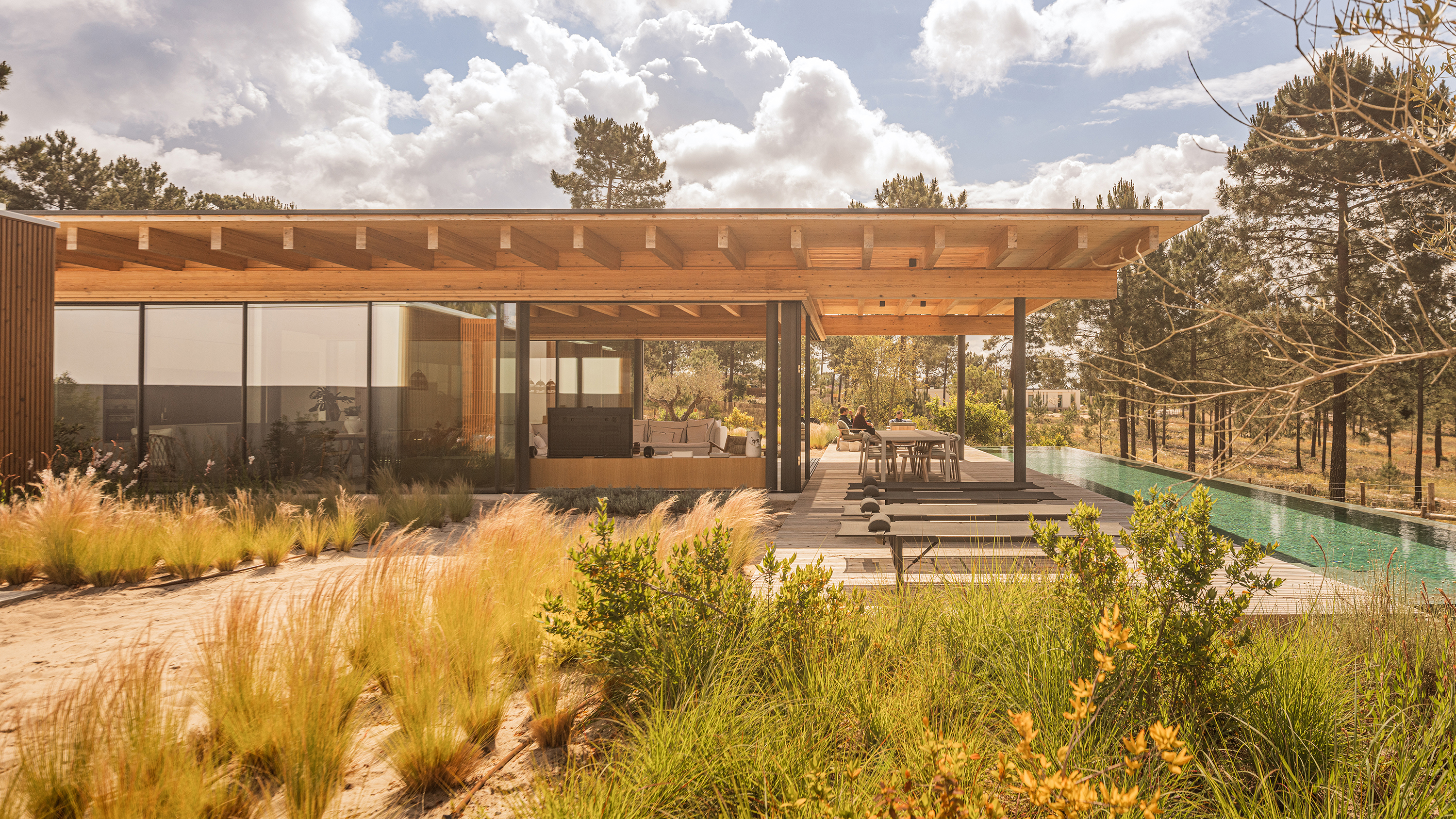
CR House
Comporta, Portugal

FACTS
- Total area
- 3389 m2
- Built area
- 670 m2
- Conclusion
- 2024
PROJECT
- Architecture
- Jacobsen Arquitetura
- Architecture team
- Paulo Jacobsen, Bernardo Jacobsen, Edgar Murata, Marcelo Vessoni, Francisco Rugeroni, Felipe Bueno, Lucila Dib, Vinicius Prearo, Alahyse Paiva, Elisa Albuquerque, Brayan Godoy, Melina Bercovici
- Interior design
- Jacobsen Arquitetura
- Interior design team
- Paulo Jacobsen, Bernardo Jacobsen, Edgar Murata, Marcelo Vessoni Marcela Guerreiro Nicole Hanna, Stephanie Bergh, Gabriel Carvalho, Paula Máximo, Carolina Lácquila
- Landscape design
- Topiaris
- Lighting design
- Light Design
- Structure
- Proemma
- Photos
- Fernando Guerra
Set in Comporta, a former fishing village on the Portuguese coast, the CR House is a summer residence surrounded by pine trees, sandy dunes and arid vegetation. The house seeks a quiet dialogue with its natural context—an architectural presence that respects the landscape instead of competing with it.
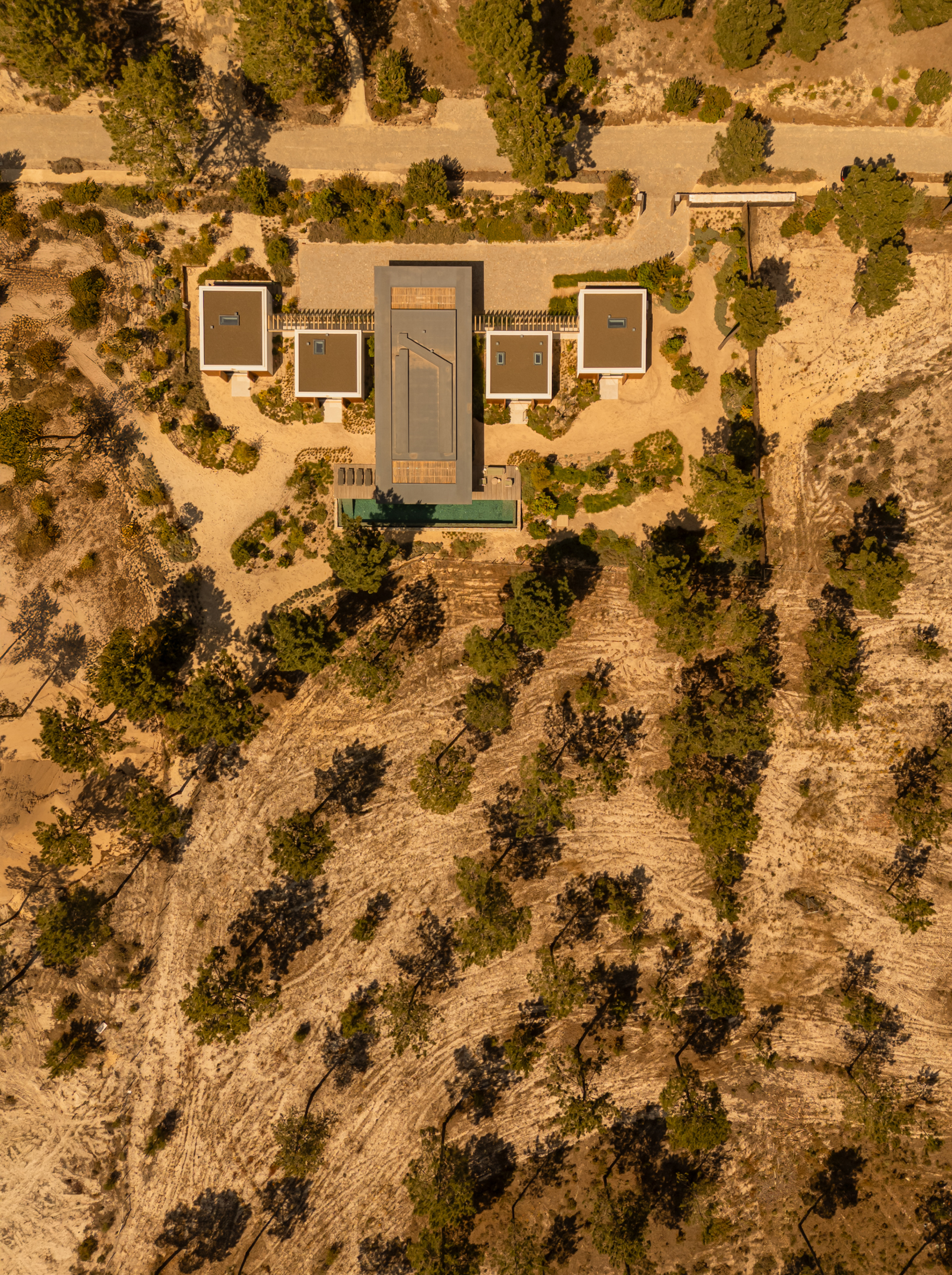
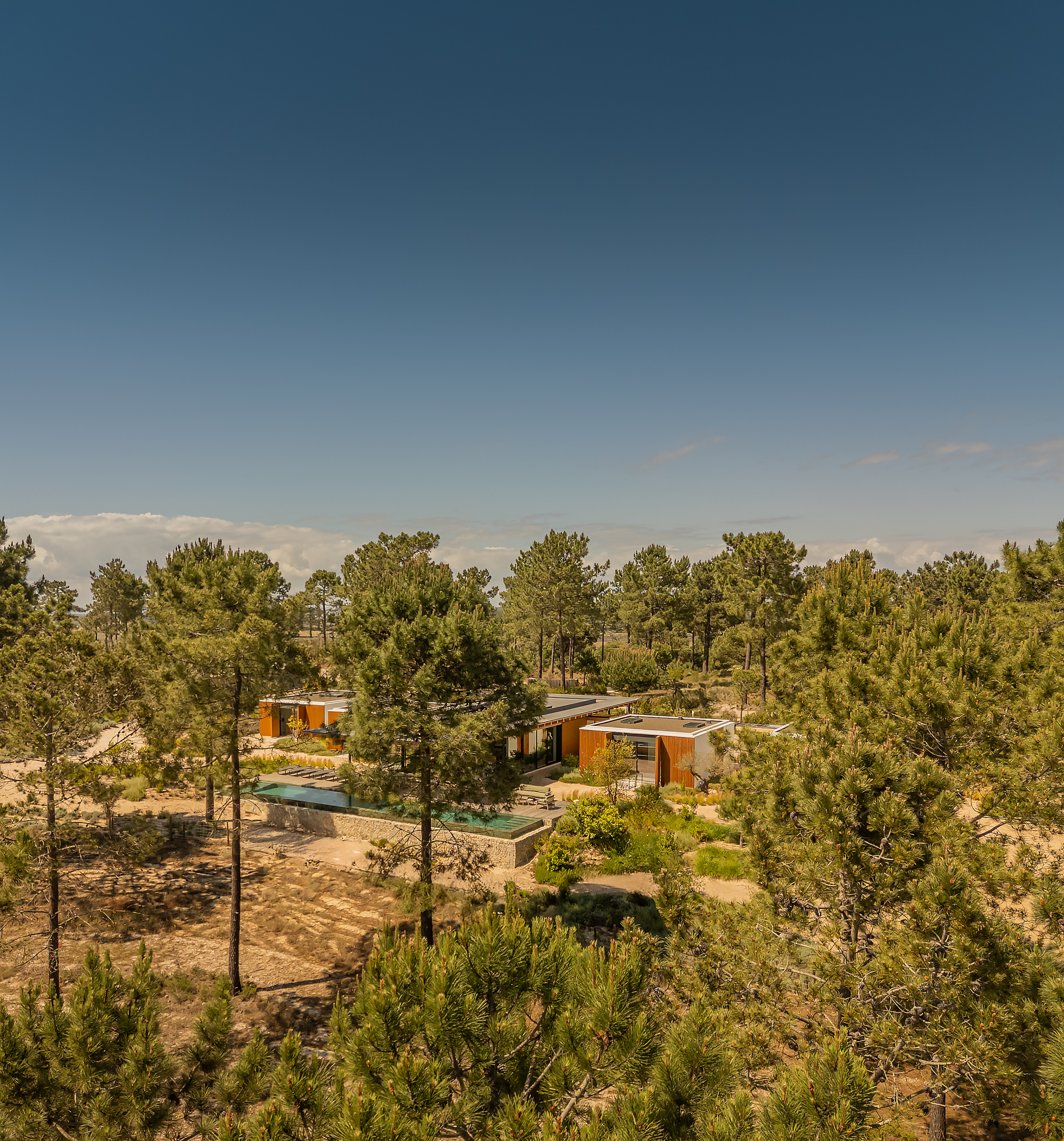
The residence was conceived for a couple who frequently host their large family. To accommodate this lifestyle while maintaining privacy and serenity, the project is organized into five independent bungalows. A central pavilion houses the social areas, while the four remaining bungalows offer private suites. A wooden pergola walkway weaves all the volumes together, gently framing outdoor circulations and creating shaded transitions between blocks.

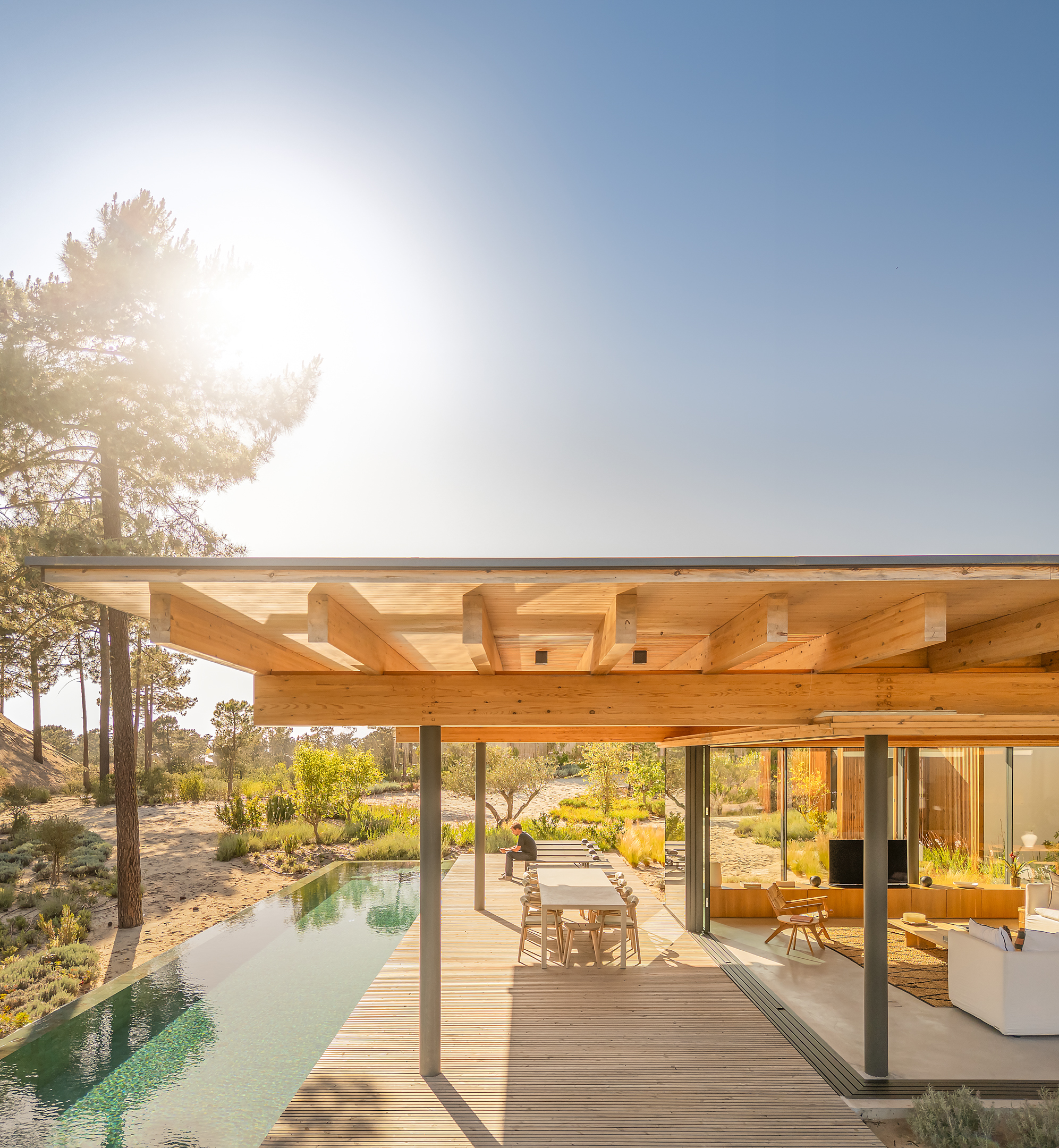
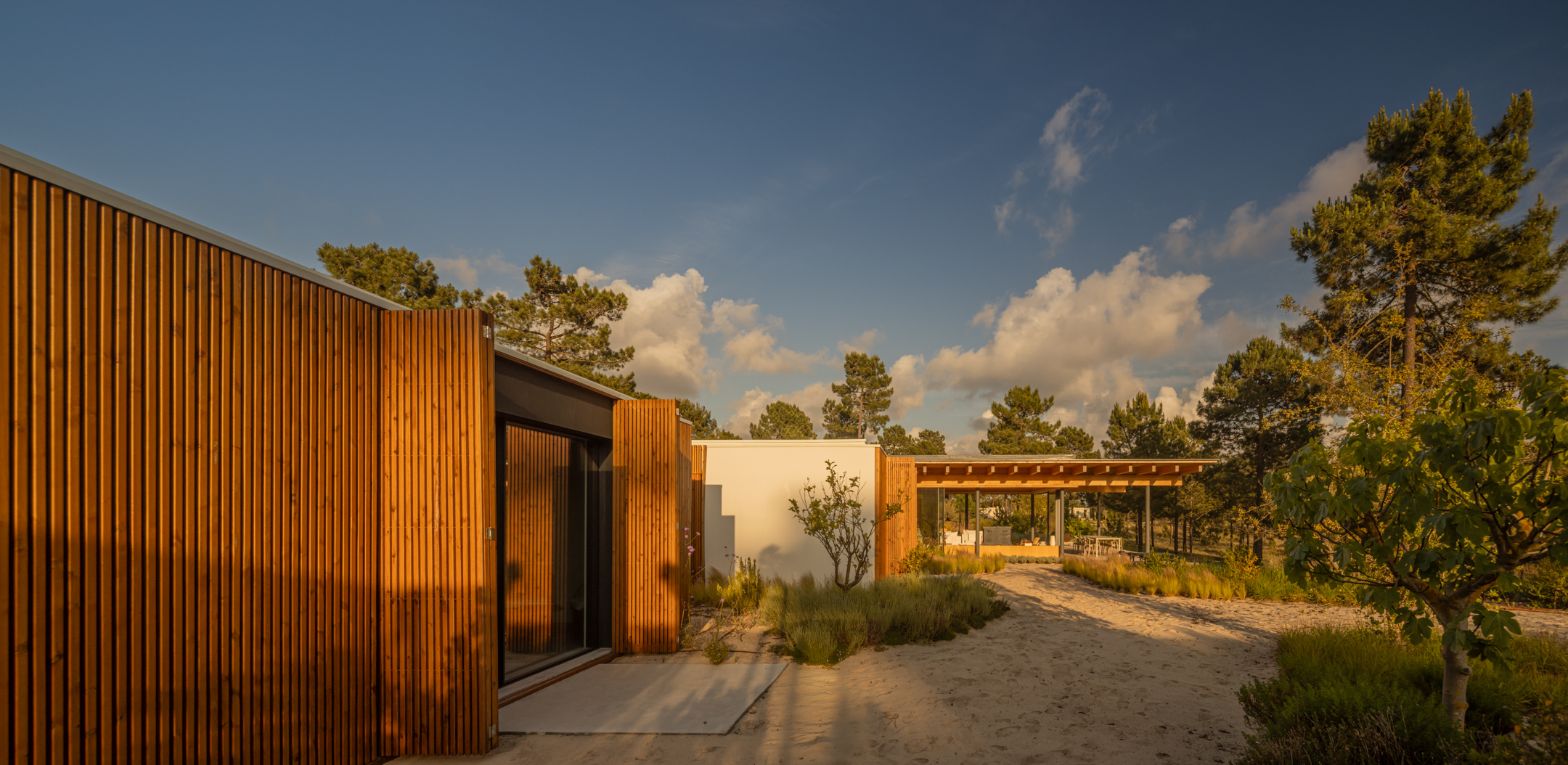


The social pavilion, conceived as a transparent glass box, opens completely to the surrounding woods and dunes. Floor-to-ceiling glass panels blur the boundary between indoors and outdoors, reinforcing the sense of openness. Concrete was chosen for the floors and countertops, while wood coverings and white walls define the interiors. The structural system, made of laminated wood, lends lightness to the composition, allowing the architecture to breathe with the landscape.
It was important for us to consider how specific the area was in terms of nature and vegetation, and how we wanted to create a house that would complement the surroundings instead of clashing with it. To achieve this, we opted to use wood as the main material, as a way to visually mimic and interact with the pine trees around. The color palette of the home is heavily inspired by the surroundings, with wood tones alluding to the pine trees and beige tones alluding to sand. Ultimately, we wanted to create a very silent house, so that nature and architecture could seamlessly coexist.
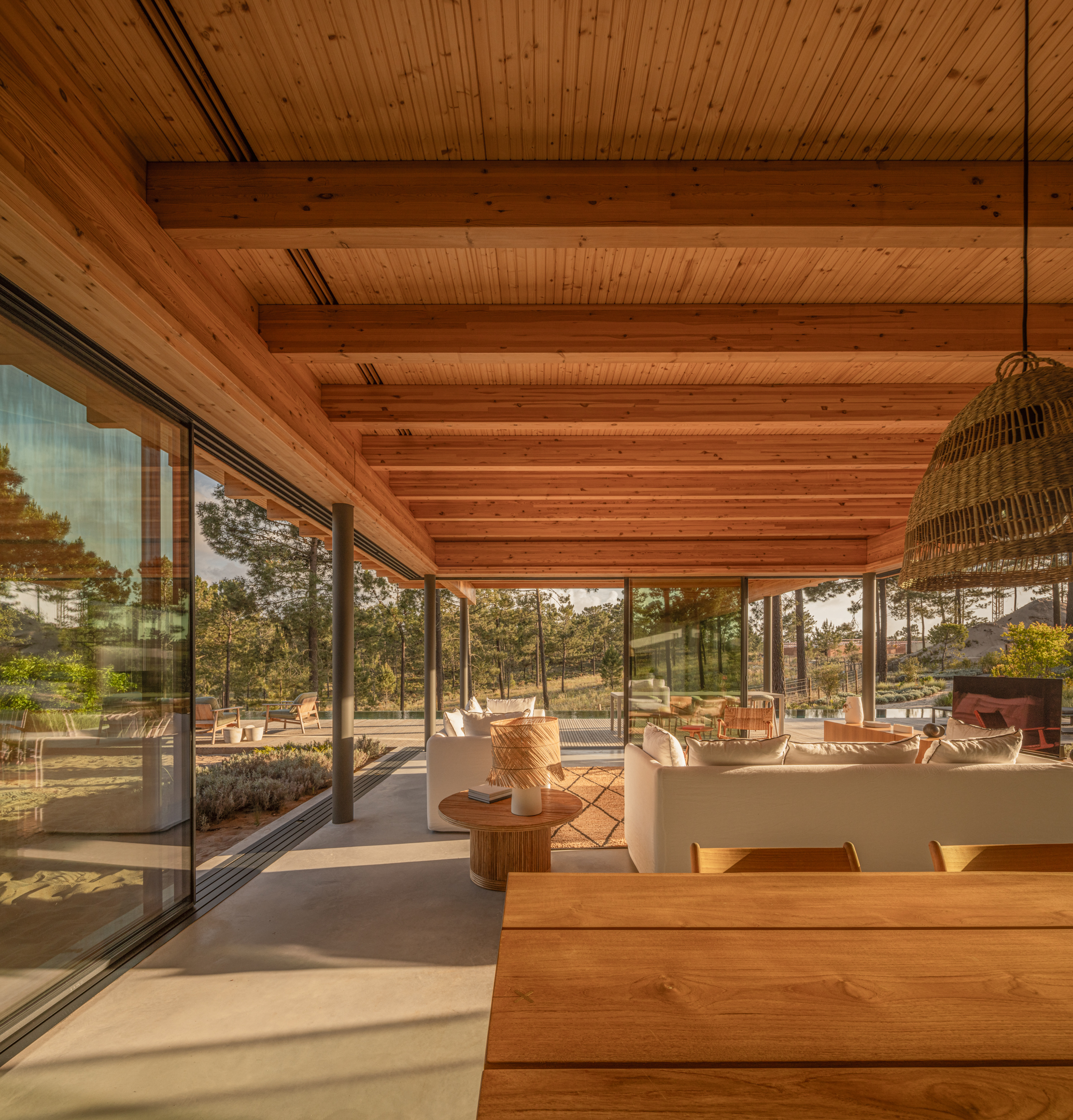
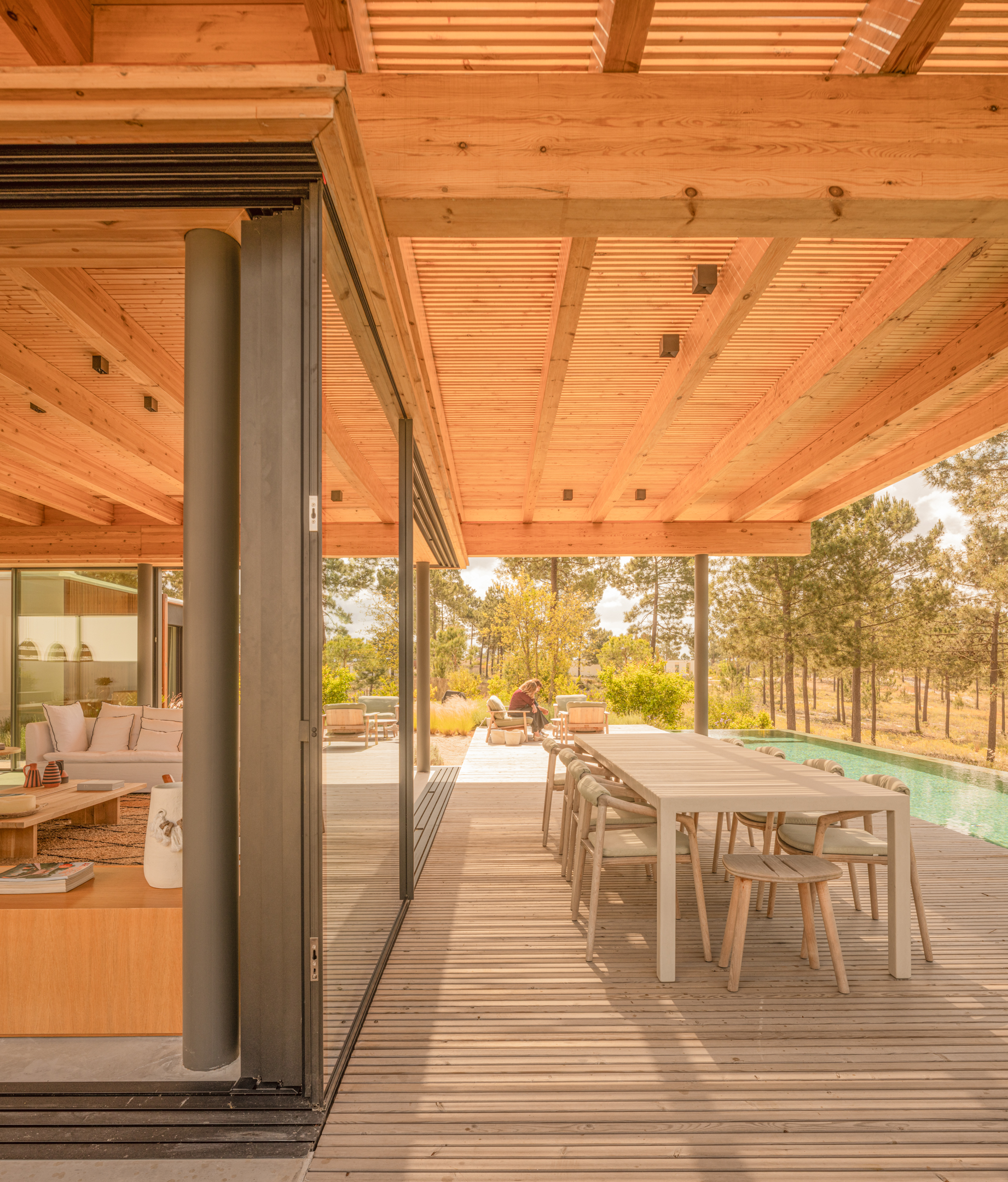
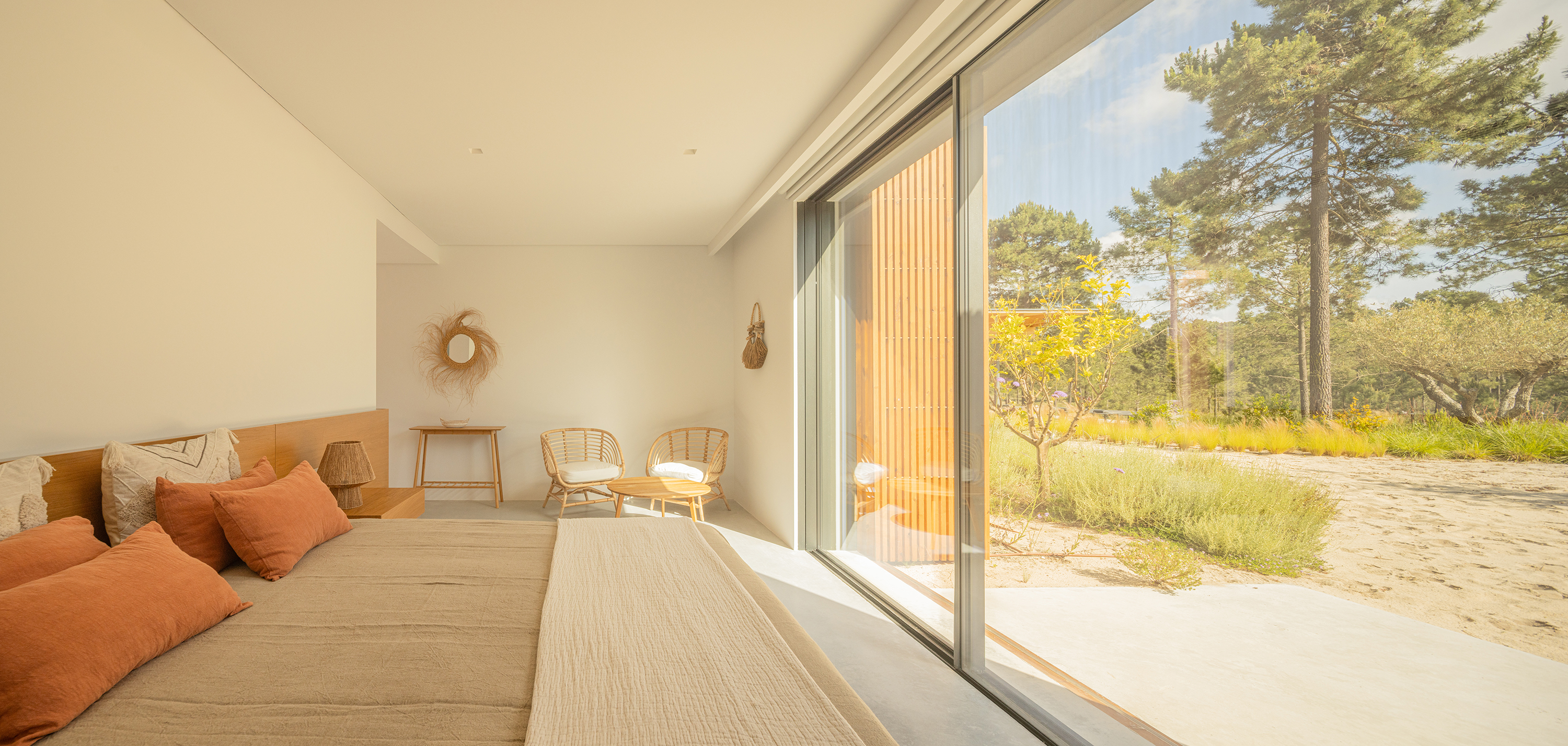
In Brazil we have the saying “pé na areia”, which could be literally translated as a “foot on the sand”, meaning a house that is an extension of its surroundings, where one can continuously move without worrying about being in or out. It is a very specific, tropical way of life, which refers to the spirit of a place, that we wanted to incorporate in this project.
